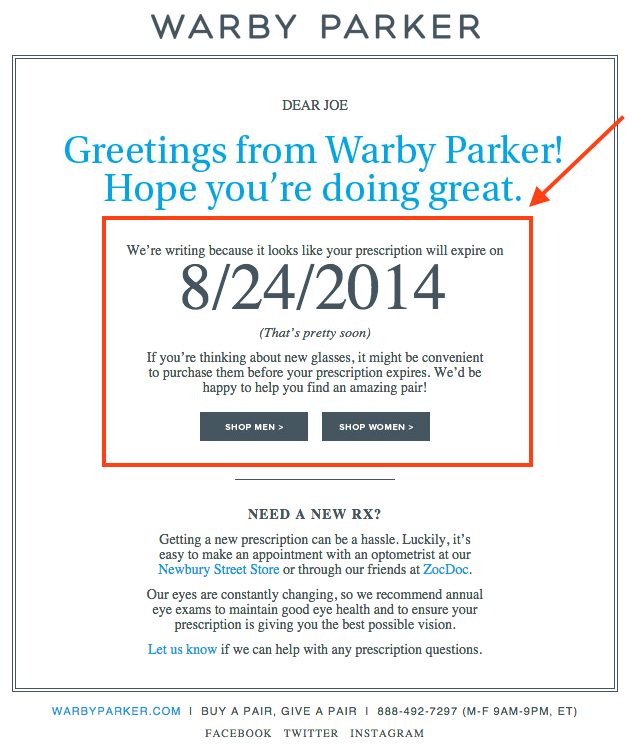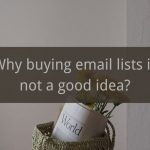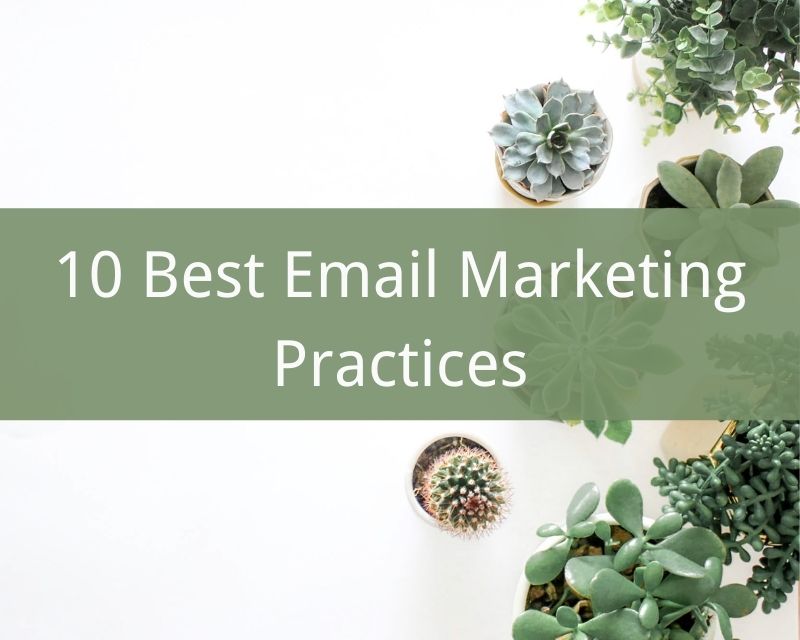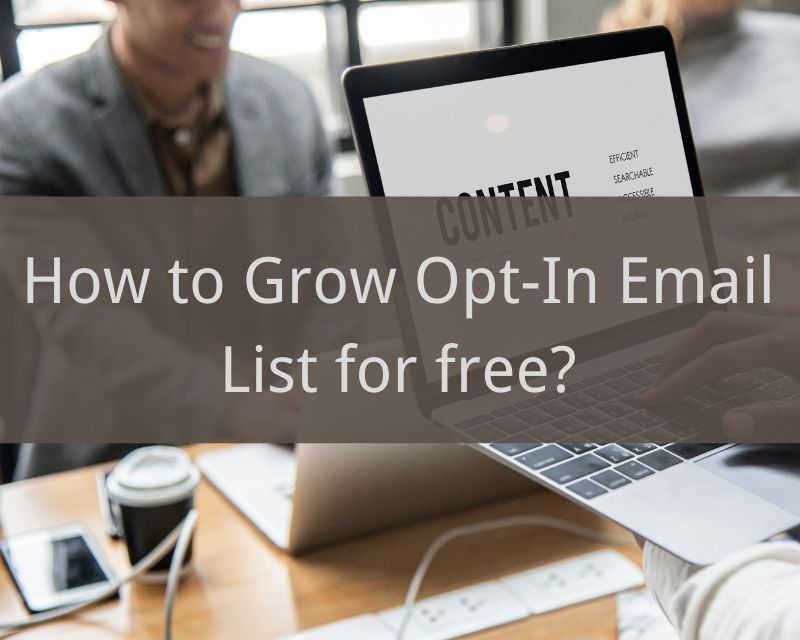Email marketing has come a long way in the last few years. But of all the fancy new features brands are taking advantage of, you know what’s interesting? A well-written plain text email can have just as many bells and whistles as a well-designed (if not better) email.
The truth is, no matter how fancy your marketing emails look, if they don’t have well-written content, your subscribers will stop opening – and start deleting – your messages.
So, how do you write a good marketing email? It all comes down to a few copywriting best practices that you should apply to the subject line of your message and the body of the message itself.
10 Email Copywriting Tips for Writing Better Marketing Emails
We’ll start with copywriting tips for better subject lines, followed by copywriting tips for the bodies of your emails.
How to write a subject line
Part of writing compelling email copy is nailing down the subject line. The subject line is like the gatekeeper of your email. If no one is interested enough to open your email, no one will be able to read your compelling email copy.
This interest comes almost entirely from the subject line of the email (the sender’s name also plays a role). We’ve written several blog posts on crafting email subject lines, including one on the anatomy of a great subject line and one showcasing 18 examples of great subject lines for brands. Here’s a distillation of what you need to know to write great compelling email copy.
#1 Use actionable language
For the subject line of an email, using actionable language doesn’t necessarily mean using a verb, although it certainly helps. For example, OpenTable sent me an email that said “Take Mom to brunch” in the subject line. This is one way to effectively use actionable language in an email subject line: by incorporating a verb (such as “take,” “download,” “reserve,” “ask,” “buy,” etc.), the reader knows what they can do in the email.
But there are ways to use actionable language without relying on verbs, which gives you more room to play around with wording. What it comes down to is using language that makes it clear to the recipient what they can do with the information in the email, should they choose to open it. In other words, keep the value for the user top-of-mind.
For example, I once got an email from Microsoft Ads with the subject line “34% of US holiday shoppers will start by Labor Day”. They didn’t push me to start my advertisement on their platform but reminding me that there is gonna be a shopping season, go and set your ads and improve your impressions. Though I’m not ready to start my ads on Microsoft, I remembered Labor Day is a big shopping day. It is time to increase my ads budget and maybe gonna have a big sell.
#2 Personalize when possible
Highly segmented emails tend to have higher levels of performance – such as open rates and click-through rates – than non-personalized emails. According to a study by the Direct Marketing Association, segmented and targeted emails generated 58% of revenue for marketers surveyed, while 36% of revenue was driven by emails sent to specific target opt-ins.
This isn’t entirely surprising. After all, the more segmented your email list is, the more you can personalize the subject line and provide relevant content to that email recipient.
So ask yourself. Is there a way to make your email subject lines more personal? I’m not talking about the dynamic field you insert into someone’s [FIRSTNAME] – email recipients stopped being interested in that fancy feature some time ago.
Consider this scenario instead: You’re a realtor with a huge database of clients …
- Some of them are looking to rent, while others prefer to buy.
- Their ideal location ranges across several cities and zip codes.
- They all have different price points with which they’re comfortable.
- Some are looking for a studio, while others want a mansion.
- You even know that a group of them will only accept homes that have been renovated in the past 5 years.
You certainly wouldn’t send a blank email in all these different sections of your list, right?
Your email subject lines wouldn’t be the same either. You might have a subject line that says, “Renovated 1BR apartment for rent in Cambridge. And another subject line says, “RSVP. Colonial home in Sudbury open Sunday”. Each subject line addresses the different needs of two completely different groups of clients.
#3 Prioritize clarity, and only then think about “catchiness”
Write a subject line that is firstly clear and secondly engaging. In marketing copy, clarity should always, always, always be your top priority. If, after you’ve drafted a clear subject line, you can still make it catchy, funny, cute, whimsical, by all means, then go for it. But don’t sacrifice clarity for entertainment value.
For example, UrbanDaddy is always clear, but sometimes also funny, catchy, or entertaining. Let’s take a look.
- UD | A Hotel in the Middle of the Ocean – Catching
- UD | Nunchucks. Made from Beer Cans. Finally. – Funny
- UD | Getting Everyone Together: Now Less Obnoxious –Entertaining
- UD | A Grill the Size of a Foosball Table –Catching
- UD | It’s Ice Cream. It’s Beer. It’s Beer Ice Cream. –Funny
- UD | Here’s a Private Bahamian Island. Do Your Thing. –Entertaining
Some of these subject lines either make the recipients chuckle or are bizarre enough to pique your interest. But it is always extremely clear what you will get when you open the email.
#4 Align your subject line copy and email copy
You probably already know how critical it is to keep your call-to-action copy and your landing page offer consistently. Well, it’s no different when crafting your email subject lines and email messages.
What your email subject line promises, the email message should deliver. Why? It’s not just because it’s responsible — it’s also because click-through rates drop dramatically when readers don’t get what they were actually promised in the subject line. (And, in the long run, your email open rates will drop, too.)
Back in 2011, we performed a test of our own. We sent the same email with two different subject lines to two different groups of people:
- “54 New Data Slides for Your Marketing Decks”: 26% click-through rate
- “Get Key Marketing Trends From the Marketing Data Box”: 10.4% click-through rate
The first subject line, which was straightforward and much more accurate had a better click-through rate by 15.4% over the second subject line, which was vaguer and less accurate.
The key takeaway here? A high email open rate means nothing without any clickthroughs.
How to Write an Email
Now that you’ve crafted an excellent email subject line, your audience has taken full notice of the body of your email. So, how do you make copies that will get them to click? Here’s what you need to know that’s important!
#5 Establish relevancy
Just like the email subject line should strive to establish relevancy through personalization, so should the copy in the message of the email.
Again, it takes more than just a dynamic name tag for your compelling email copy to convince readers that what’s inside is relevant to them. So use the very beginning of the email to explain how you know each other.
Below is an example of an email sent by Warby Parker to a colleague of mine. (By the way, the subject line was very clever: “Uh-oh, your prescription is expiring.”)

Take a look at that first paragraph, called out in red. Right off the bat, the marketers at Warby Parker tell the reader why they’re being emailed (their prescription is expiring soon) and that this email is meant to help them find a new pair of glasses before that expiration date.
Imagine if this email didn’t have that first paragraph, and started instead with what is currently the second paragraph: “Getting a new prescription can be a hassle. Luckily, it’s easy to make an appointment with an optometrist at our Newbury Street Store or through our friends at ZocDoc.”
Why are you emailing me about a prescription? Why would I want your advice? How do you know I live near Newbury Street? By reminding the recipient that they gave Warby Parker their prescription information in the past, there’s a greater likelihood that that person will click through and redeem the offer in this email.
#6 Write in the second person
Writing in the second person means using the pronouns “you,” “your,” and “yours.” For example, “Before you leave in the morning, remember to bring your jacket.” It means you orient the copy towards the reader, not yourself.
That’s a nice balance of second-person language that keeps the focus on the customer, not the brand. This is a subtle tactic that helps you stay value-oriented, but this next step I’m about to cover is crucial to hitting the point home.
#7 Talk about benefits, not features
You know the value of your email. But does your recipient? No, not yet. And it’s your job to explain it.
The problem is, many emails only explain the feature they are offering, not the benefit. Take a look at the copy in two separate eCommerce emails I’ve received. Which one is touting the feature, and which is touting the benefit?
#8 Be brief
One of the worst mistakes email copywriters make is trying to shove the entire story into the email message. Think about when you open a marketing email in your inbox. Do you read every single word in there? Probably not. It’s more likely that you scan for important points so you can glean the overall message, and decide whether you want to take any action.
So if you’re sending emails with hundreds of words of copy, you’re making it harder for recipients to decide whether or not to click through – simply because they can’t quickly sift through all the information in your email.
Instead, find a way to summarize what the reader will get in a compelling way and get them to click through to a page on your site for more information.
Keeping your message accurate is the key to writing short but compelling email copy. What do you want to say with your email? If you know the action your email should drive – the recipient orders a free latte on demand, the recipient remembers to buy their Bruce Springsteen tickets, the recipient is motivated to go to the gym – then you’ll be more likely to draft concise email copy that stays focused on that end goal.
If writing concise but compelling email copy isn’t enough to motivate you to narrow your goal, remember that having only one main call to action in your email marketing will get you better click-through rates than emails with competing calls to action.
#9 Be lovable
Just because emails are meant to be informative, doesn’t mean they can’t be delightful. In some cases, emails can be a great way to let your brand personality shine through and help you build meaningful relationships with the people on your email list. After all, providing people with a lovely experience begins and ends with how you communicate with them.
#10 Use actionable language in CTA
That’s right. Emails also have calls to action. Well, here’s what a good email looks like. First, your email call to action should be very easy to recognize. Remember. People will scan their emails. If there’s one thing you want your recipients to notice, it’s your call to action.
There are two qualities that make this call-to-action button effective:
- Great design: First, notice how the large, bright orange button stands out from the blue design; that call-to-action certainly isn’t hard to find.
- Great copy: The copy on the button is just as important. Your call-to-action button should include language that is succinct, clear, and action-oriented. This AmazonLocal button tells you in very few words what you can do using verbs — you can view the deal showcased in the email.
But it’s also crucial to take some time to optimize your plain text emails with a clear call to action. No matter how fancy your HTML emails are, not all email clients will render your images, and not all email recipients will choose to display your images. In fact, we looked at whether HTML emails or plain text emails performed best and found that while people said they preferred HTML-based and image-based emails, the simpler emails actually performed best – and the plain text emails performed best.




